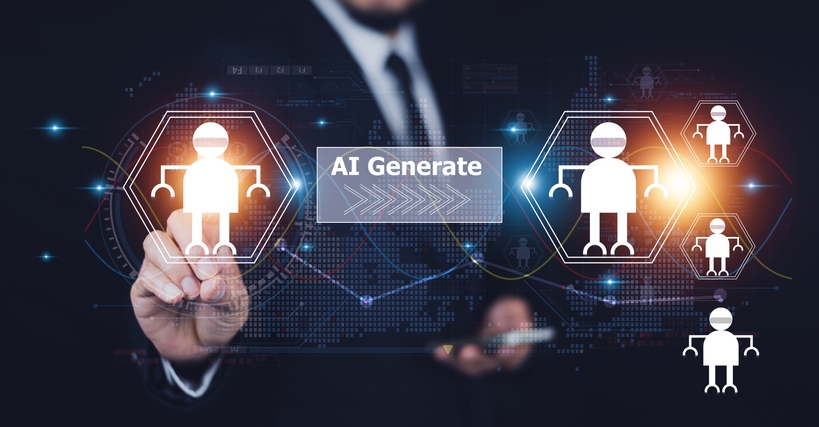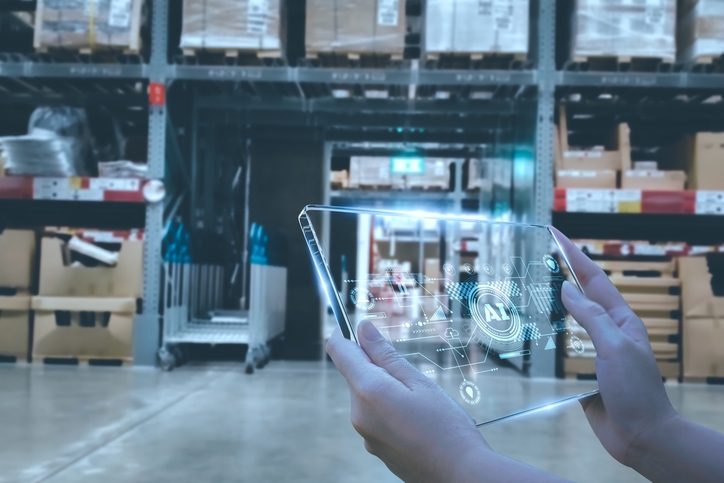Event Security in 2025: How AI Keeps Attendees Safe
Discover how AI technology enhances event security, improving safety measures and response times. Read the article to learn more about smart solutions.

Introduction: Why AI is Reshaping Event Security
The rise of AI in event security means organizers no longer rely solely on human monitoring but gain real-time assistance in detecting potential threats before they escalate.
Event organizers today face mounting challenges—large crowds, potential threats, political rallies, sporting events, and high-profile conferences make events prime targets for malicious actors. Traditional security measures like manual bag checks and scattered security guards are no longer sufficient to ensure a secure environment.
This is where AI in event security plays a crucial role. By leveraging artificial intelligence, security teams can achieve situational awareness, rapid response, and comprehensive coverage that was previously impossible.
1. Smarter Screening at Entry Points: AI-Powered Bag Scanners & Facial Recognition
Problem: Manual bag checks are slow, inconsistent, and create long queues, frustrating event attendees. Traditional ID checks also miss suspicious behaviour or forged credentials. A smooth check-in process creates a strong first impression for any event.
AI Solution:
- AI-powered bag scanners (e.g., Evolv Express, Qylur) use real-time surveillance + thermal imaging to detect weapons, liquids, and banned substances without opening bags.
- Facial recognition technology verifies attendee identities instantly, reducing wait times and spotting flagged individuals.
Why Better:
- Faster than manual checks.
- Reduces human error by identifying potential threats automatically.
- Integrates with event management software for attendee verification.
Ease of Use & Onboarding:
- Installation: Moderate (requires video surveillance cameras and integration with entry points).
- Training: Security personnel can be onboarded in 2–3 hours.
- Cost: Starting from $15k–$50k depending on scale.
Efficiency: Speeds up check-in by 3–5x while ensuring appropriate response to flagged risks.

2. AI-Powered Crowd Density Monitoring for Safer Movement
Problem: Crowd control is a top challenge at large events like concerts or political rallies. Overcrowding leads to violent incidents, alcohol abuse, or accidents.
AI Solution:
- AI-assisted security checkpoints speed up entry by combining facial recognition with thermal imaging, reducing bottlenecks for large crowds.
- AI tools like WaitTime and CrowdVision track crowd movement, density, and flow using real-time surveillance and movement patterns.
- Automated alerts are sent to security officers if crowd density exceeds safe limits.
Why Better:
- Provides live data for event organizers to adjust traffic flow.
- Enhances crowd management by predicting bottlenecks before they escalate.
- Security teams can be redirected to areas of concern instantly.
Ease of Use & Onboarding:
- Installation: Requires video surveillance cameras at strategic points in the event venue.
- Training: Minimal—security staff monitor via dashboards with real-time alerts.
- Cost: SaaS model, approx. $1k–$5k/month depending on scale.
Efficiency: Cuts crowd-related incidents by up to 40% (reported by case studies in sporting events).
3. Drone Surveillance for Aerial Coverage & Rapid Response
Problem: Large outdoor venues are difficult for security teams to monitor on the ground. Restricted areas often go unchecked, leaving gaps in overall security.
AI Solution:
- Drones equipped with AI (e.g., Dedrone, DJI enterprise solutions) provide aerial surveillance with thermal imaging, detailed images, and real-time alerts.
- Ideal for monitoring traffic flow, crowd density, and suspicious activities in large crowds.
Why Better:
- Provides comprehensive surveillance of areas unreachable by security guards.
- Acts as a force multiplier, reducing the need for excess security personnel.
- Identify threats (unattended bags, trespassers) faster than ground patrols.
Ease of Use & Onboarding:
- Installation: Easy deployment; requires trained security professionals to operate drone systems.
- Training: 1–2 days of certification for operators.
- Cost: $5k–$30k per drone system.
Efficiency: Reduces blind spots and ensures rapid response during emergencies.
4. AI-Powered Behavior Analysis to Detect Suspicious Activities
Problem: Security officers can miss subtle cues in attendee behavior when managing large crowds. Suspicious activities often escalate before intervention.
AI Solution:
- AI tools analyze surveillance feeds and send instant alerts, allowing security teams to focus on rapid response instead of manual monitoring
- Tools like AnyVision and BriefCam analyze movement patterns to detect suspicious behavior, alcohol abuse, or potential violent incidents.
- AI continuously processes security data from video surveillance cameras.
Why Better:
- Provides real time alerts to security staff when anomalies are detected.
- Helps event planners create personalized event experiences by studying safe vs. unsafe crowd zones.
Ease of Use & Onboarding:
- Installation: Uses existing systems (CCTV, access points).
- Training: Minimal—integrates with security operations dashboards.
- Cost: Licensing fees start at $2k/month.
Efficiency: AI becomes an extra set of eyes for security leaders, ensuring seamless coordination among staff members.
5. Intelligent Incident Response & Seamless Coordination
Problem: In traditional setups, security teams lack seamless integration—delayed communication can worsen crises.
AI Solution:
- Platforms like Everbridge and OnSolve provide real-time alerts and automated scheduling of security staff.
- AI prioritizes alerts, suggests the appropriate response, and directs security officers where needed.
Why Better:
- Ensures faster event execution when threats arise.
- Allows security personnel to collaborate without confusion.
- Improves situational awareness across the event venue.
Ease of Use & Onboarding:
- Installation: Cloud-based, integrates with existing systems.
- Training: 1–2 sessions for security operations staff.
- Cost: $5k–$20k annually depending on event scale.
Efficiency: Cuts response times by up to 50%, creating a secure environment for event attendees.

6. Thermal Imaging for Low-Light & Hidden Threat Detection
Problem: Standard video surveillance cameras underperform in low light conditions or when objects are concealed. This leaves blind spots in outdoor evening events or poorly lit venues.
AI Solution:
- AI-enabled thermal imaging systems (e.g., FLIR Systems, Hikvision) detect unusual heat signatures.
- Identify hidden weapons, unauthorized individuals in restricted areas, or suspicious behavior in low visibility.
Why Better:
- Provides detailed images that are invisible to the human eye.
- Enhances overall security at night events and large venues.
- Works as a force multiplier for security guards.
Ease of Use & Onboarding:
- Installation: Requires thermal cameras at key entry points and large crowd zones.
- Training: 1 day of orientation for security personnel.
- Cost: $8k–$25k per system.
Efficiency: Ensures comprehensive surveillance and identifies potential threats missed by regular CCTV.
7. Protecting Restricted Areas & Valuable Assets with AI Access Control
Problem: Backstage areas, VIP lounges, and storage zones are vulnerable to unauthorized entry, and manual monitoring is resource-heavy.
AI Solution:
- AI-driven access control systems (e.g., Kisi, Verkada) use facial recognition technology and biometric scanning.
- Real-time alerts notify security staff of breaches.
Why Better:
- Prevents suspicious activities before they escalate.
- Protects valuable assets and enhances event security.
- Reduces dependence on constant human monitoring.
Ease of Use & Onboarding:
- Installation: Moderate (requires scanners + software integration).
- Training: 1–2 sessions for security officers.
- Cost: $3k–$10k depending on the number of checkpoints.
Efficiency: Cuts unauthorized access attempts by over 60% in pilot case studies.
8. AI-Powered Communication Systems for Security Teams
Problem: During emergencies, delayed communication among security staff often worsens situations.
AI Solution:
- Platforms like Everbridge, Motorola CommandCentral use AI to filter noise and send real time alerts to the right teams.
- Automated scheduling ensures security personnel are deployed at critical points.
Why Better:
- AI also supports event staff by automating repetitive checks—like verifying passes or monitoring restricted zones—so they can focus on critical human interactions.
- Creates seamless coordination across security operations.
- Delivers the appropriate response quickly.
- Scales across large crowds and complex venues.
Ease of Use & Onboarding:
- Installation: Cloud-based, works with existing systems.
- Training: 2–3 hours for staff members.
- Cost: $5k–$15k annually.
Efficiency: Cuts communication delays by up to 70%.
9. AI for Alcohol Abuse & Violence Prediction
Problem: Alcohol abuse in large crowds is one of the main triggers of violent incidents at events. Human security officers often miss early warning signs.
AI Solution:
- AI tools (e.g., Umbo Smart Security, Athena AI) analyze movement patterns and attendee behavior to flag aggression.
- Alerts security teams before violence breaks out.
Why Better:
- Detects suspicious behavior earlier than humans.
- Protects attendees by preventing escalation.
- Reduces liability risks for event organizers.
Ease of Use & Onboarding:
- Installation: Integrates with existing video surveillance.
- Training: Minimal—alerts appear in dashboards.
- Cost: $2k–$8k per month.
Efficiency: Reduces alcohol-related incidents by up to 50% (case study: major sporting events).
10. Post-Event AI Analysis for Future Event Security
Problem: Security leaders often fail to analyze what went wrong or right after events. This limits event success in future planning.
AI Solution:
- AI platforms (e.g., Palantir Gotham, Genetec) process security data from video surveillance, drones, and access logs.
- Identifies weak spots and provides custom solutions for upcoming events.
Why Better:
- Turns raw security data into relevant information for event planners.
- Improves event execution strategies.
- Helps event security teams learn from previous incidents.
Ease of Use & Onboarding:
- Installation: Cloud dashboards, plug into existing systems.
- Training: 1–2 sessions for security leaders.
- Cost: $10k–$30k annually depending on data volume.
Efficiency: Creates a continuous cycle of improvement, enhancing future events security.

Conclusion: AI as the Future of Event Security
In 2025 and beyond, artificial intelligence is no longer optional—it’s the backbone of event safety. From facial recognition at entry points to AI-powered crowd management and drone surveillance, AI is helping event organizers and security leaders move from reactive to proactive security measures.
For event planners, the message is clear:
Leverage AI technologies now to ensure future events are safer, smarter, and more resilient against security threats.
Plan your next event with Azavista!
Azavista’s all-in-one event management software goes beyond logistics and engagement—it helps event planners ensure event safety and seamless execution. Azavista gives you the control and visibility you need to protect your attendees and deliver unforgettable experiences.
Book a Demo with Azavista Today and see how you can integrate AI tools into your next event for smarter planning, stronger security, and stress-free execution.
More Event Management












